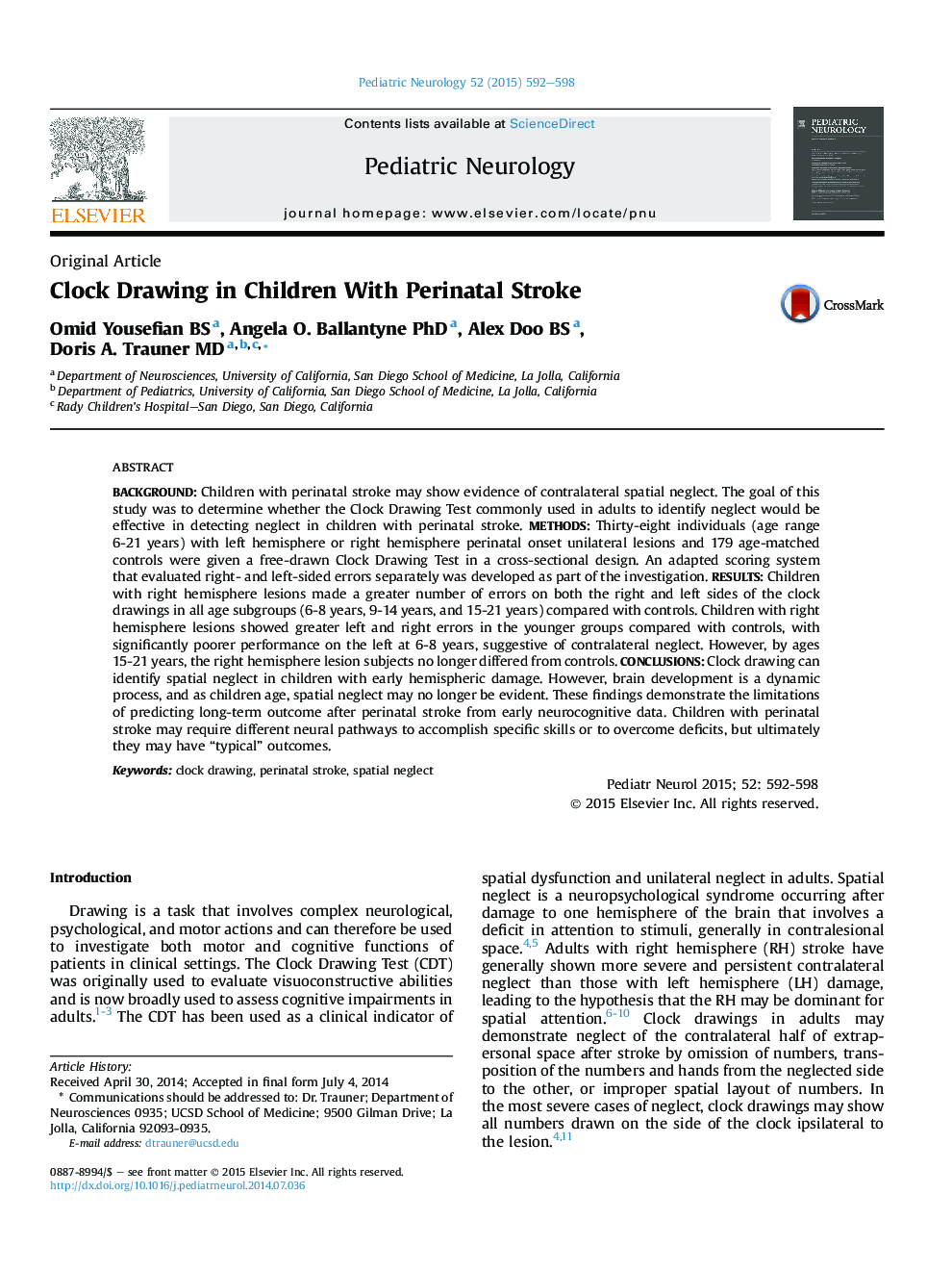| کد مقاله | کد نشریه | سال انتشار | مقاله انگلیسی | نسخه تمام متن |
|---|---|---|---|---|
| 3084484 | 1189769 | 2015 | 7 صفحه PDF | دانلود رایگان |
BackgroundChildren with perinatal stroke may show evidence of contralateral spatial neglect. The goal of this study was to determine whether the Clock Drawing Test commonly used in adults to identify neglect would be effective in detecting neglect in children with perinatal stroke.MethodsThirty-eight individuals (age range 6-21 years) with left hemisphere or right hemisphere perinatal onset unilateral lesions and 179 age-matched controls were given a free-drawn Clock Drawing Test in a cross-sectional design. An adapted scoring system that evaluated right- and left-sided errors separately was developed as part of the investigation.ResultsChildren with right hemisphere lesions made a greater number of errors on both the right and left sides of the clock drawings in all age subgroups (6-8 years, 9-14 years, and 15-21 years) compared with controls. Children with right hemisphere lesions showed greater left and right errors in the younger groups compared with controls, with significantly poorer performance on the left at 6-8 years, suggestive of contralateral neglect. However, by ages 15-21 years, the right hemisphere lesion subjects no longer differed from controls.ConclusionsClock drawing can identify spatial neglect in children with early hemispheric damage. However, brain development is a dynamic process, and as children age, spatial neglect may no longer be evident. These findings demonstrate the limitations of predicting long-term outcome after perinatal stroke from early neurocognitive data. Children with perinatal stroke may require different neural pathways to accomplish specific skills or to overcome deficits, but ultimately they may have “typical” outcomes.
Journal: Pediatric Neurology - Volume 52, Issue 6, June 2015, Pages 592–598
